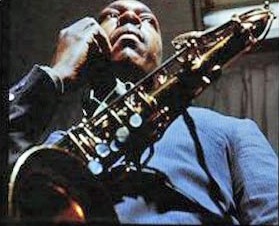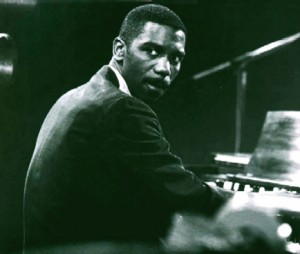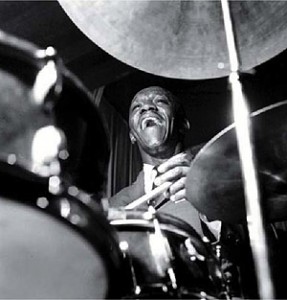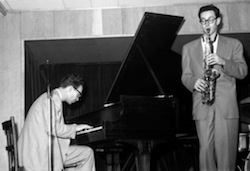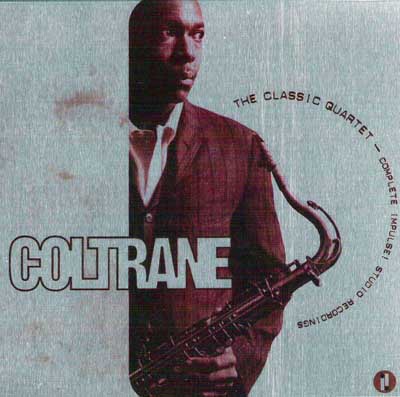Tonight I made one of my own picks and chose the ‘Heavyweight Giant’ box set that Rhino put out that collected John Coltrane’s albums on Atlantic. Mostly, I had ‘Ole’ in my head earlier today and was surprised not to have it ready to play yet. What I think is a LOT of the fun of this set is Coltrane’s transition into full-time band leader, and starting to stretch out more and more. Tunes stretch out, and you start to see Coltrane tighten up in the technical realm as well. The playing on ‘Giant Steps’ is phenomenal, tight and clean. But by the time you get to ‘Olé Coltrane’, ‘The Avant-Garde’ and ‘Coltrane’s Sound’ you can start to see where his future taking shape (especially as McCoy Tyner and Elvin Jones start to appear on the scene).
For most of my time through college, this set was the Coltrane I listened to and enjoyed the most. As I finished up college (and started to compose more) the later Coltrane on Impulse! took on more of a focus for me. I started to understand and enjoy the REALLY out there stuff quite a bit, so this set has sat on my shelf for quite some time without me listening to it as much.
And that is really too bad, because now that I have started to listen to this set again, I am remembering how amazing it is. Just amazing jazz, and I really appreciate all the alternative takes that show how different each play through of a tune can be. You also see a very melodic Coltrane on some of these tracks as well. ‘Central Park West’, ‘Naima’, and ‘Cousin Mary’ all stand in great relief to the staggering virtuosic playing on ‘Giant Steps’ and ‘Countdown’.
All the music in this set was recorded between early 1959 to mid 1961. ‘Kind of Blue’ was also recorded during this time. Within 2 years, he was signing with Impulse! and finalizing ‘the Quartet’ that would record ‘A Love Supreme’ in 1964. In other words, it is a serious time of transition for Coltrane (even more staggering to think he would be dead by 1967). It is also some of the most polished recordings that I think he made. By the time he goes to Impulse!, he also returns to Rudy Van Gelder to do some of the recording (which I don’t mean to imply is ‘unpolished’, but that the engineering is as much a part of the recording as the playing is… in a good way!). These albums seem to exist out of the rest of his works in a strange way, as though the Atlantic recordings were a chance for Coltrane to get a start away from the collaborative surroundings he had been in to start and discover who he would be as a band leader. And these recordings show some amazing steps being taken. None of the work is poor… these albums are great. These discs are the glue between Coltrane as up and coming sideman and the late Coltrane (and I mean ‘late’ as in ‘late’ Beethoven… where so much exploration and forward looking greatness is found by the artist), and to see the change happen over the course of two years is quite stunning.


